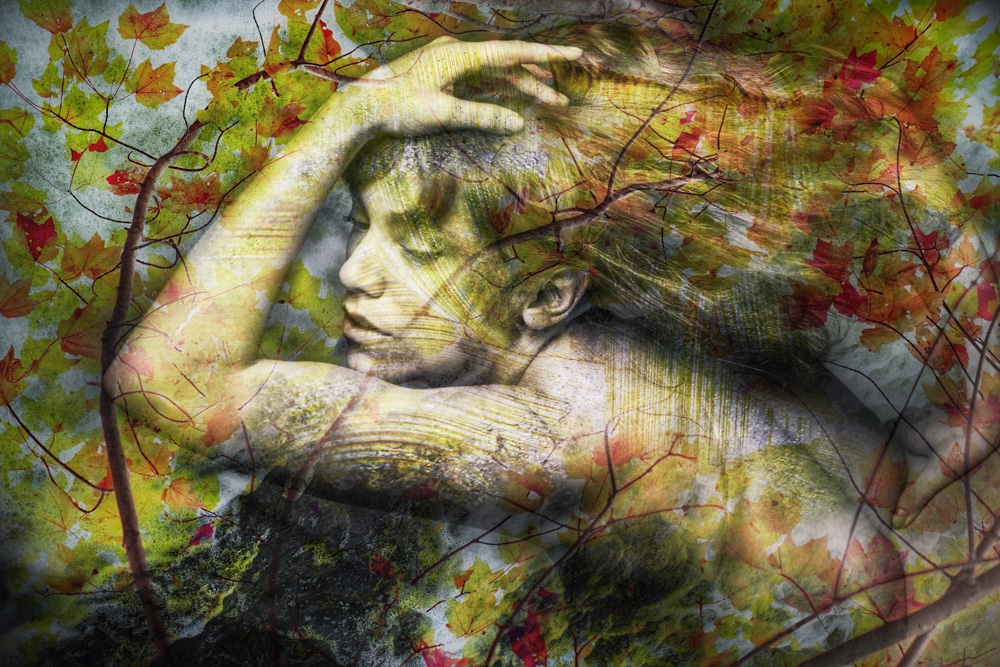Stephen Spartana
Interview with Stephen Spartana
TeIFA 2019 Winner, 1st Place, Fine Art, “Life in Layers”
Stephen Spartana is an American photographer, who has enjoyed a long-term career as a commercial photographer. His fine art photography investigates alternate points of view of the natural world, creating works that could be easily taken out of a marvelous fantasy world.
Q: Tell us a bit about your background?
I grew up in a working-class community, playing baseball from the age of eight through my junior year in college. I entered a local university as an accounting major, on a baseball scholarship, with plans to get into the major leagues or become a CPA.
Then my plans took a turn with a serious shoulder injury and the realization that my future as an accountant would be as painful as my shoulder. I started shooting photographs during my freshman year, and just enjoyed the process so much that I took my first formal course the next semester. In an effort to save money, I transferred to a community college and took as many photography and art courses that were available.
On my own, I photographed ballet dancers and suddenly realized that photography was my passion. With this new direction I decided to enter a degree program at the Maryland Institute College of Art in Baltimore, but to do so I needed to raise substantial money for tuition. One of the best paying jobs in Baltimore at the time was working in a steel mill in the Melt Shop. After 3 ½ years of overtime hours running cranes, pouring molten steel, I had saved enough money to return to college full time. After graduation two and a half years later, I started my photography career as an assistant and began taking my own commercial assignments soon after.
Q: What drew you to your particular field of photography?
This is a tough question because I’m not sure what I would consider my field of photography. I’ve been a commercial photographer for the last 36 years, while simultaneously developing my artwork. The commercial work has encompassed a wide range of clients and assignments.
I just enjoy taking photographs and shooting light. While some photographers might specialize in certain areas, shooting specific markets or clients, I prefer the challenge of varied subject matter and feel that each is a learning experience. It keeps me fresh. I think that if you understand composition, light, color, framing, you can probably shoot anything if you really have an interest in it.
Q: Are there any rituals you practice before you start working?
I’m most productive in the morning, starting with coffee to warm up my brain and stretching exercises to loosen my body. I enjoy scouting locations, exploring and making sure the selected site is going to be a good situation. When working in the studio, it’s a little bit of a different story. I’ll listen to music to get into a work rhythm.
Some favorites are Tori Amos, the Beatles and a lot of Bob Marley. Music is essential when working on images on the computer or painting in the studio or any other work that might pertain to a project that I’m in the midst of working on.
Q: In an era where the consumption of audiovisual content is massive, what do you feel is the future of photography?
It’s tough to say where things are going to go with Photography in the upcoming years. Commercially, there will continue to be a need for photographers because highly skilled creative problem solvers will remain in demand. I tell all my assistants to add video to their tool kit.
Currently, there is a great need for video content and this need will increase in the future. I’m amazed at the number of images I see every day, whether it’s LinkedIn, Instagram, Facebook, Tiktok or whatever platform is hot at the moment. I’m not sure how much value all these images and videos have. My hope is that the photography industry may see an emergence of the masters – visual creatives that push the envelope of art photography. Possibly even a resurgence of analog. I love looking at rich transparencies and personally I would love to start shooting analog film again, probably with a 4 x 5.
I think there will always be a place for photography in the art world, where there are so many directions you can take and so many ways you can integrate photography with painting and other mediums.
Q: What is your ultimate goal in your work and your art?
I would love to devote myself full-time to self-directed artwork, to continue to do research on our connection to the natural world. Nature can be such an incredible source of inspiration, solace and comfort during times of turmoil and stress.
I guess my ultimate goal is to participate in exhibitions and venues in different cities around the world and to publish a book of my collected works. I’m looking to explore and share my vision with art buyers and collectors and the only way to do that is to throw myself into the research full-time. The one thing that this pandemic has taught me, since we’ve had the benefit of a lot of free time, is that when I focus solely on the artwork, I’m able to make much more satisfying productive progress and discoveries.
Q: What inspired you to create your ‘Life In Layers’ series?
The “Life in Layers” series comes from a career spanning forty-some years of taking photographs and capturing moments in time and place. Like snowflakes, no two photographs are the same, every moment in time ushers in changes from the micro to the macro level, never to be repeated.
My current research utilizes a number of images which function in the same way that painters use brushes and paint palettes; but my paints are moments of time captured through photography and the tools are a combination of various analog films mixed with digital media. Life in Layers extended my research of the interplay between form, texture and light. These surreal landscapes are layered and edited combinations of figurative, floral, water and mineral elements. Similar to a dream, the work suggests the ephemeral quality of life, the passage of time and the uncertainty of the future. The work is an extension of views of nature, humanity and our relationship to Earth.
I believe strongly in a positive approach to life and our world, with the understanding that we, as stewards, have the responsibility of providing a better place for future generations to thrive. I choose to focus on the hidden fragile beauty that surrounds us, presenting these fleeting views like a time-lapse series, encouraging the viewer to preserve our beautiful and fragile planet.
Q: Take us back to the time you discovered your passion for photography.
I grew up gazing at the incredible photographs of National Geographic, Time and Life Magazines. It seemed to be a fantasy, National Geographic. I didn’t really think about doing photography seriously until I decided that whether I made money or not, I wanted to do something that I loved. I admired art photographers and through the photography program I discovered the work of Irving Penn and Pete Turner. I always loved the paintings of Georgia O’Keeffe, especially her flowers series.
I decided to become a photographer, taking the 11-year route to get my BFA from the Maryland Institute College of Art. I understood that making money as an artist was not realistic at the beginning of my career. So, I decided that I would do commercial photography because it was challenging while being creative. I enjoyed problem solving and I was able to hone my skills at the clients’ expense and continue working on my art on the side.
Q: What do you miss, or what would you rescue, from analog photography?
There are so many things I miss about analog, mainly because that’s where I began. My love for photography came out of the mystery of film. The joy of printing in the darkroom. It was a challenging medium to work with, but I would spend hours over my light table looking at transparencies. Analog has a certain quality that just can’t be matched.
When you asked me what I would rescue? That’s really easy for me. I would love to have some of the films back that used to be available. Polaroid had some interesting films, some great black and white films, high contrast color and black and white, infrared, all sorts of different specialty films. I think it would be nice to have some of those available now. For myself I enjoy combining images of analog along with digital.
Q: What is the story behind your winning TeIFA entry?
Caress of Maples is an image that rose out of my love for trees, especially the maple tree. Through my life I’ve seen such an amazing array of maples, with their colors ranging from chartreuse to crimson. I’ve just always been knocked out by the vividness and the beauty of their colors. In this particular image, water flows around a woman. She represents the evolution of nature, more specifically the constant change of seasons. Like a Greek goddess, channeling rushing water and wind to transition from summer to the beauty of autumn.
Q: Is there any specific city where you would like to have a studio? Why?
That’s a great question but really hard to answer. I’ve been lucky to have visited so many amazing locations, but I’m instinctively drawn to Italy. I’ve been there several times and on my last visit was completely seduced by the area around Como, its proximity to the foothills of the Alps. The Italian culture and lifestyle amaze me, how every aspect of daily life seems to be lived effortlessly from an artistic perspective. Or, maybe I’m just attuned to the art and design because I crave an environment surrounded by art. Quite honestly, more of my work would take place out of the studio, photographing and exploring new areas and elements to incorporate into future artworks.
The chromes from Stephen’s initial compelling artwork show in the 1990’s, turned into the beginning stage for his present studies. The interplay of dark and white figures overlaid with subtleties of blossoms made a mix of structure and shading.
His goal both at that point and now, is to make a provocative picture, an unpredictable and dynamic mix that tempts the watcher to look further. His present investigations extend the utilization of characteristic components to incorporate scenes during seasons of growth and decay.

